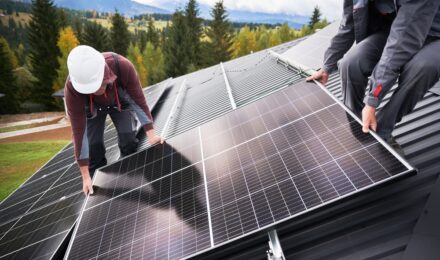Amid rapid technological advancements and the continued growth of the global population, one monumental challenge continues to confound philanthropists and those working toward a better tomorrow: the finite nature of our resources. Essential materials that have powered industries and fueled innovation, such as fossil fuels, are becoming increasingly scarce.
Even with abundant reserves, environmental concerns like global warming and climate change are prompting stricter regulations on their use. With resources dwindling and their impact on the planet growing, it is crucial to seek alternative energy solutions—enter renewable energy.
What is Renewable Energy?
In simple terms, renewable energy refers to energy we derive from natural resources. The most common of these resources include sunlight, wind, and water. These sources are pivotal for ensuring long-term sustainability as they help mitigate climate change and contribute to energy security. What makes renewable energy particularly appealing is its widespread availability—our primary challenge lies in how to capture it effectively.
In contrast, non-renewable energy sources like coal, oil, and gas take millions of years to form. Additionally, their use has a detrimental effect on the environment, releasing harmful greenhouse gases like carbon dioxide when burned. Since fossil fuels are responsible for the majority of global emissions, transitioning to renewable energy is essential in addressing the climate crisis. Moreover, renewable energy is not only more affordable, but it also generates more jobs than its non-renewable counterparts.
Solar Energy
Solar energy is the most abundant of all renewable resources, and for good reason: the sun is everywhere, and we can harness it even on cloudy days. Did you know that the Earth intercepts 10,000 times more solar energy than humanity needs? This demonstrates that we are vastly underutilizing solar energy.
Basically, we can use solar energy for lots of various purposes, including heating, cooling, natural lighting, and electricity generation. There are two primary ways to convert solar energy into electricity. The first involves using photovoltaic (PV) panels to convert sunlight into electricity. The second method uses mirrors to concentrate solar radiation and then it is converted into electricity.
As governments and organizations worldwide push for renewable energy adoption, the cost of manufacturing solar panels has dropped significantly, making solar power one of the most affordable renewable energy sources. Most solar panels last about 30 years, and they come in a range of materials and colors.
Innovation in solar technology has come a long way. Builders now integrate modern solar panels into roofing materials like tiles and sheets, which creates dual-purpose roofs. Moreover, technological advancements allow photovoltaic cells to embed in window panels, which reduces reliance on traditional panels and simplifies solar energy harnessing.
Wind Energy
Wind energy is the second-largest source of renewable energy. It is generated by harnessing the kinetic energy of moving air using wind turbines. These turbines can be located offshore, in open seas or freshwater bodies, where wind currents are strong, or onshore in particularly windy regions. Wind energy has been utilized for nearly a thousand years, and the technology for capturing this power has evolved continuously, particularly with the advent of taller turbines and larger rotor diameters.
The potential for wind energy production far exceeds the global demand for electricity. The amount of energy a wind turbine produces depends on the average wind speed at the location. While not every region is windy, wind energy potential exists in many parts of the world. The best sites for installing wind turbines are remote areas where wind currents are less disrupted.
Geothermal Energy
Unlike solar and wind energy, which are easily accessible, geothermal energy is extracted from the Earth’s interior. This energy is typically harnessed from underground reservoirs or wells.
There are two main types of geothermal reservoirs. The first are hydrothermal reservoirs, which are naturally hot and sufficiently permeable. The second type requires hydraulic stimulation to release heat energy, known as enhanced geothermal systems. Once the heat is extracted, steam from these reservoirs is used to generate electricity. Although geothermal energy has only been in operation for about 100 years, it is a reliable and mature source of power.
Hydropower
As the name suggests, hydropower harnesses the energy from moving water, whether from rivers or reservoirs. Water stored in a reservoir is released from a higher to a lower elevation to generate electricity. Run-of-river hydropower generates energy from the natural flow of rivers.
Currently, hydropower is the largest source of renewable electricity. It is relatively stable, but its effectiveness can be impacted by climate-induced droughts and changes in ecosystems that affect rainfall patterns. While hydropower is renewable, large-scale infrastructure can have negative environmental impacts. As a result, small-scale hydropower systems are often considered more environmentally friendly.
Looking Forward
It’s clear that renewable energy is crucial for the future, but transitioning from fossil fuels to renewable sources has proven challenging. Major industries must balance the adoption of non-polluting energy sources with maintaining energy efficiency. Achieving this balance is not simple, which is why many organizations focus on reducing carbon dioxide and other harmful pollutants like sulfur dioxide and nitrogen oxides.
Renewable energy is a key driver of sustainable development. While there are still challenges to address, such as generation capacity, installation, and storage, harnessing renewable energy will pave the way for a cleaner, more sustainable energy future.
References
1. International Renewable Energy Agency (IRENA). Renewable Energy Statistics.
2. International Energy Agency (IEA). Renewables: Analysis and Forecasts to 2028.
3. National Renewable Energy Laboratory (NREL). Renewable Electricity Futures Study.

